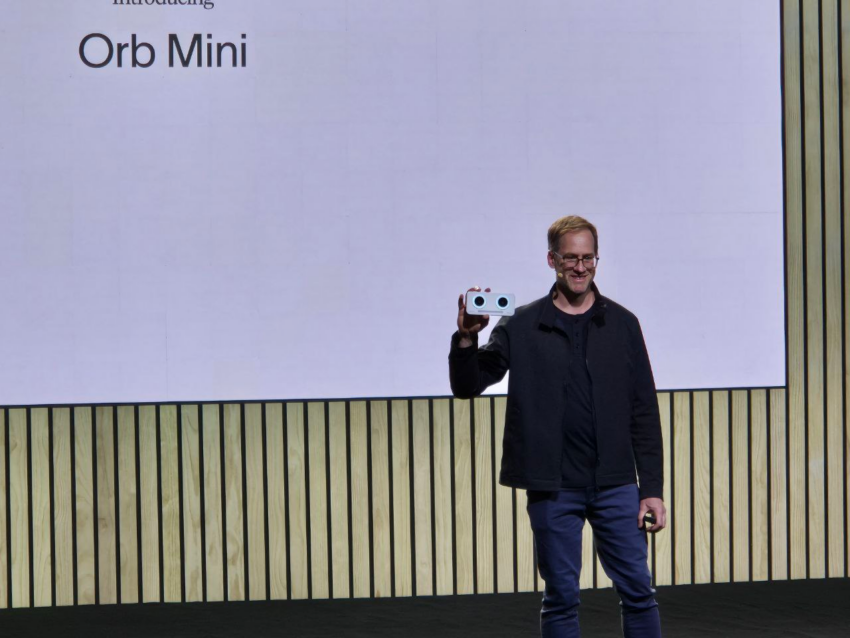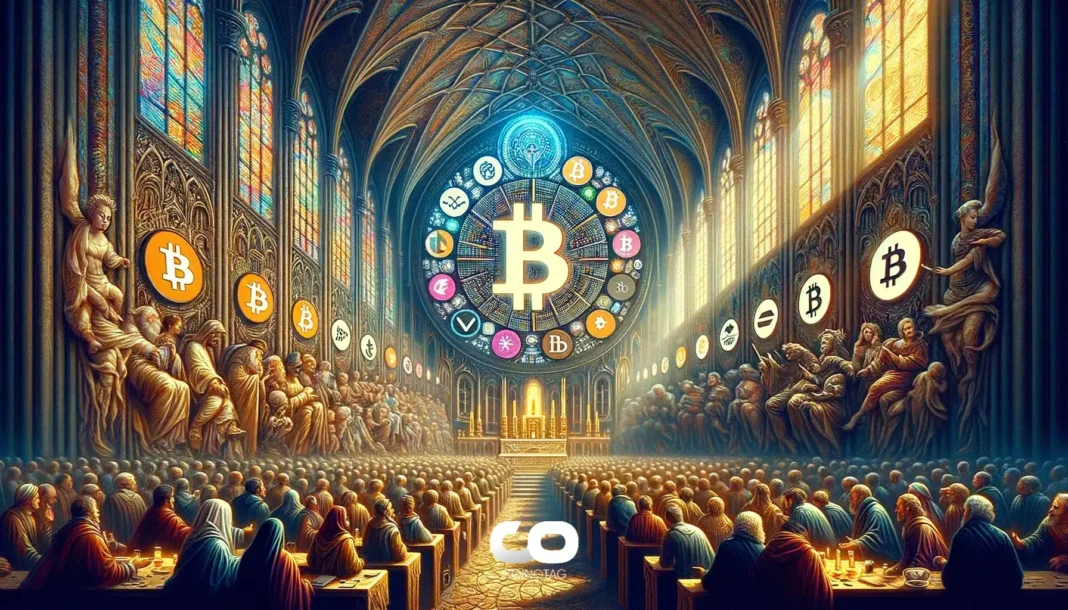| COINOTAG recommends • Exchange signup |
| 💹 Trade with pro tools |
| Fast execution, robust charts, clean risk controls. |
| 👉 Open account → |
| COINOTAG recommends • Exchange signup |
| 🚀 Smooth orders, clear control |
| Advanced order types and market depth in one view. |
| 👉 Create account → |
| COINOTAG recommends • Exchange signup |
| 📈 Clarity in volatile markets |
| Plan entries & exits, manage positions with discipline. |
| 👉 Sign up → |
| COINOTAG recommends • Exchange signup |
| ⚡ Speed, depth, reliability |
| Execute confidently when timing matters. |
| 👉 Open account → |
| COINOTAG recommends • Exchange signup |
| 🧭 A focused workflow for traders |
| Alerts, watchlists, and a repeatable process. |
| 👉 Get started → |
| COINOTAG recommends • Exchange signup |
| ✅ Data‑driven decisions |
| Focus on process—not noise. |
| 👉 Sign up → |
-
World’s entry into the U.S. market marks a transformative leap in biometric identity verification, aiming for a nationwide impact with 7,500 Orbs.
-
Partnerships with giants like Visa and Circle showcase a strategic approach to integrating digital assets into everyday transactions.
-
“World’s technology is designed to protect user privacy while enhancing financial accessibility,” noted Sam Altman in his keynote address.
World gains a foothold in the U.S. with biometric verification, partnering with Visa and Circle to integrate digital assets seamlessly into daily commerce.
Biometric Verification Across America
World’s expansion into the United States introduces a pioneering biometric identity verification system. Starting in six major cities—Atlanta, Austin, Los Angeles, Miami, Nashville, and San Francisco—the company plans to deploy 7,500 eye-scanning Orbs by year-end. This initiative is set to transform how identity verification is approached in the U.S.
During the launch event, co-founder Sam Altman stated, “America should lead innovation, not fight it off,” emphasizing the nation’s role in fostering technological advancements. Although World has operated in over 160 countries, the U.S. market is crucial as it presents significant opportunities for growth and innovation.

| COINOTAG recommends • Professional traders group |
| 💎 Join a professional trading community |
| Work with senior traders, research‑backed setups, and risk‑first frameworks. |
| 👉 Join the group → |
| COINOTAG recommends • Professional traders group |
| 📊 Transparent performance, real process |
| Spot strategies with documented months of triple‑digit runs during strong trends; futures plans use defined R:R and sizing. |
| 👉 Get access → |
| COINOTAG recommends • Professional traders group |
| 🧭 Research → Plan → Execute |
| Daily levels, watchlists, and post‑trade reviews to build consistency. |
| 👉 Join now → |
| COINOTAG recommends • Professional traders group |
| 🛡️ Risk comes first |
| Sizing methods, invalidation rules, and R‑multiples baked into every plan. |
| 👉 Start today → |
| COINOTAG recommends • Professional traders group |
| 🧠 Learn the “why” behind each trade |
| Live breakdowns, playbooks, and framework‑first education. |
| 👉 Join the group → |
| COINOTAG recommends • Professional traders group |
| 🚀 Insider • APEX • INNER CIRCLE |
| Choose the depth you need—tools, coaching, and member rooms. |
| 👉 Explore tiers → |
The company’s tactical approach includes a strategic partnership with Visa, allowing users to spend their digital assets at more than 150 million merchants globally. The soon-to-be-released World Card will reward users with WLD tokens for every transaction, thus incentivizing adoption and engagement.
Financial Integrations and Partnerships
In an exciting development for the cryptocurrency sector, World has integrated with Circle to bring the USDC stablecoin natively to the World Chain blockchain. This integration will enhance the speed and cost-effectiveness of cross-chain transfers, enabling seamless transactions. The overall effect is a more interconnected financial ecosystem.
| COINOTAG recommends • Exchange signup |
| 📈 Clear interface, precise orders |
| Sharp entries & exits with actionable alerts. |
| 👉 Create free account → |
| COINOTAG recommends • Exchange signup |
| 🧠 Smarter tools. Better decisions. |
| Depth analytics and risk features in one view. |
| 👉 Sign up → |
| COINOTAG recommends • Exchange signup |
| 🎯 Take control of entries & exits |
| Set alerts, define stops, execute consistently. |
| 👉 Open account → |
| COINOTAG recommends • Exchange signup |
| 🛠️ From idea to execution |
| Turn setups into plans with practical order types. |
| 👉 Join now → |
| COINOTAG recommends • Exchange signup |
| 📋 Trade your plan |
| Watchlists and routing that support focus. |
| 👉 Get started → |
| COINOTAG recommends • Exchange signup |
| 📊 Precision without the noise |
| Data‑first workflows for active traders. |
| 👉 Sign up → |
Additionally, the company is testing the waters in diverse applications of its technology, including a pilot with Match Group to use World ID for age verification on Tinder in Japan, and a collaboration with Razer to employ “proof of human” verification within gaming platforms to counteract bot activity.
Rich Heley, presenting the latest updates on the Orb hardware, also unveiled plans for a U.S. assembly line in Richardson, Texas. This facility will manufacture the Orbs not only for American use but also to enhance global production capabilities. Furthermore, the announcement of the “Orb Mini”, a smaller version of its biometric device, indicates a commitment to accessible and distributed verification.
| COINOTAG recommends • Traders club |
| ⚡ Futures with discipline |
| Defined R:R, pre‑set invalidation, execution checklists. |
| 👉 Join the club → |
| COINOTAG recommends • Traders club |
| 🎯 Spot strategies that compound |
| Momentum & accumulation frameworks managed with clear risk. |
| 👉 Get access → |
| COINOTAG recommends • Traders club |
| 🏛️ APEX tier for serious traders |
| Deep dives, analyst Q&A, and accountability sprints. |
| 👉 Explore APEX → |
| COINOTAG recommends • Traders club |
| 📈 Real‑time market structure |
| Key levels, liquidity zones, and actionable context. |
| 👉 Join now → |
| COINOTAG recommends • Traders club |
| 🔔 Smart alerts, not noise |
| Context‑rich notifications tied to plans and risk—never hype. |
| 👉 Get access → |
| COINOTAG recommends • Traders club |
| 🤝 Peer review & coaching |
| Hands‑on feedback that sharpens execution and risk control. |
| 👉 Join the club → |

Despite facing backlash over its biometric data practices in some regions, World is committed to a privacy-forward approach. Their “Personal Custody” model ensures that users’ private data remains solely on their devices, which is crucial in today’s privacy-sensitive climate. As of the event, the platform boasts over 26 million users globally, with 12 million having undergone biometric verification.
Outlook and Future Developments
As World ventures into the U.S. market, the implications for both the cryptocurrency landscape and traditional finance are significant. Companies in this space must adapt to cater to evolving regulations and user expectations regarding privacy. The introduction of World’s biometric verification could reshape service delivery across sectors, indicating potential for wide-ranging applications.
Conclusion
World’s robust entrance into the U.S. symbolizes a pivotal moment in the intersection of technology and finance. With strategic partnerships and a focus on privacy, the company is poised to lead in biometric identification solutions. The focused expansion highlights the ongoing evolution of digital finance, reinforcing the need for innovation in the face of regulatory challenges.
| COINOTAG recommends • Exchange signup |
| 📈 Clear control for futures |
| Sizing, stops, and scenario planning tools. |
| 👉 Open futures account → |
| COINOTAG recommends • Exchange signup |
| 🧩 Structure your futures trades |
| Define entries & exits with advanced orders. |
| 👉 Sign up → |
| COINOTAG recommends • Exchange signup |
| 🛡️ Control volatility |
| Automate alerts and manage positions with discipline. |
| 👉 Get started → |
| COINOTAG recommends • Exchange signup |
| ⚙️ Execution you can rely on |
| Fast routing and meaningful depth insights. |
| 👉 Create account → |
| COINOTAG recommends • Exchange signup |
| 📒 Plan. Execute. Review. |
| Frameworks for consistent decision‑making. |
| 👉 Join now → |
| COINOTAG recommends • Exchange signup |
| 🧩 Choose clarity over complexity |
| Actionable, pro‑grade tools—no fluff. |
| 👉 Open account → |
| COINOTAG recommends • Members‑only research |
| 📌 Curated setups, clearly explained |
| Entry, invalidation, targets, and R:R defined before execution. |
| 👉 Get access → |
| COINOTAG recommends • Members‑only research |
| 🧠 Data‑led decision making |
| Technical + flow + context synthesized into actionable plans. |
| 👉 Join now → |
| COINOTAG recommends • Members‑only research |
| 🧱 Consistency over hype |
| Repeatable rules, realistic expectations, and a calmer mindset. |
| 👉 Get access → |
| COINOTAG recommends • Members‑only research |
| 🕒 Patience is an edge |
| Wait for confirmation and manage risk with checklists. |
| 👉 Join now → |
| COINOTAG recommends • Members‑only research |
| 💼 Professional mentorship |
| Guidance from seasoned traders and structured feedback loops. |
| 👉 Get access → |
| COINOTAG recommends • Members‑only research |
| 🧮 Track • Review • Improve |
| Documented PnL tracking and post‑mortems to accelerate learning. |
| 👉 Join now → |









